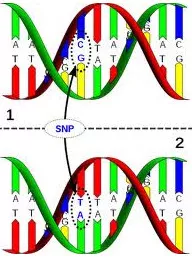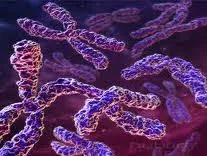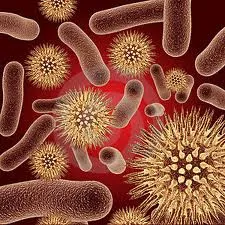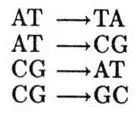Talk to us
+51 962357253
In the upper half of our brain is where the hypothalamus is located. It can be described as a factory, where various chemicals meet, related with our emotions and our thoughts.
Those chemicals are called peptides (chains of amino acids). Our body is almost all made of carbon and it produces about 20 amino acids to get the formula of its physical structure. In a way, the body is a machine that produces protein.
The hypothalamus selects a small chain of protein, called “peptides” and assembles them into a determinated chain (“neuropeptides” or “neurohormones”) that correspond to emotional states we experience daily. There is a chemical for each emotional state we experience.
Every time we experiment an emotional state, the hypothalamus puts together the corresponding peptide and releases the flow of blood through the hypophysis (pituitary gland). Through blood flow, the chemical signal can seamlessly reach different parts of the body.
All the cells in our bodies have peptide receptors on the outside. A single cell can have thousands of receptors embedded on its surface, open to the outside, ready to receive the peptide. When a peptide docks in at a cell, it fits like a key in a lock. The peptide can remain attached to the cell for as long as it needs; it can also be released and re-attached depending on the demand of that cell.
A receptor, when it has been annexed by a peptide, causes transformations in the cell, triggering a flood of chemical reactions. Many of these reactions generate a change in the very core of the cell. All cells are alive and have consciousness (if we define consciousness as the point of view of an observer). The nucleus of the cell always knows, it knows what proteins to manufacture or when to bind to its nucleus. The cell is the smallest unit of body awareness.

The cells with the empty receptors begin to communicate with the brain, claiming the peptides that have been being supplied regularly are not there. The brain, automatically starts creating pictures in your head, as an answer to restart the cycle.
For example, if you think about how to be depressed, about how much you are confused, about suffering or happiness, the cells will tell the brain that your chemical needs are not being covered. Then, the brain becomes active and searches images from the archive (past) and sends them to the frontal lobe which will begin to visualize and create the cause of your feelings.
The idea is that if you cannot control your emotional state, you’re used or addicted to it.
The neural network of the brain gives orders to the cells, and these orders are based on experiences and information that have been stored in our brain memory. We start to relate this information to the chemistry of our brain.
To change brain chemistry, we have to modify our neural network, change our own identity, change our attitude and the way we interact with the environment.
If we stand firm with an emotion, attitude or way of thinking for a long time, what we are doing is reinforcing the recipients of these cells into the reception of a kind of chemistry.
Specialized receptors in the neuropeptides are constantly getting attention from certain chemicals related to a specific emotion. Because of this, the brain is left with fewer receptors for vitamins, minerals, nutrients, fluid exchange and the elimination of waste and toxins.
Aging is the result of improper protein production. Can we stop our destructive way of thinking to generate optimal performance in our body?
If we don’t change emotionally- we don’t mean just getting decent sleep and eating healthy – we won’t succeed in stopping the cell from aging or it from malfunctioning.
Your continued use of negative emotions cause changes in our cells which can lead to a genetic mutation (Just as the proper use of our emotions can also genetically modify our DNA structure).
They are called somatic mutations, and are included in a series of possible somatic mutations.
As pointed out in the documentary, “What The Bleep Do We Know,” if one is able to modify their emotional thinking, brain neurons can establish new synapses and send specific orders to the cells of our body to change and mutate the cell nucleus.
There is debate in the scientific community between those who argue that an emotional change causes heritable mutations and those who refute it.
Although some scientists are reluctant to accept that somatic mutations are inherited in the progeny, there are known cases that prove this theory.
Scientists like Fred Sanger, Walter Gilbert and Allan Maxam, who sequenced the human genome, say that based on the evidence obtained, there are many more possibilities for genetic modification than was suspected at the time, including somatic mutations.
Russian scientists, Grazyna Fosar and Franz Bludorf, claim that the biological human DNA is superior, in many aspects, to the artificial. The last direct Russian research explains the phenomenon as clairvoyance, intuition, spontaneous and remote acts of healing, self healing, affirmation techniques, unusual light auras around people (mainly spiritual masters), mind’s influence on weather patterns and more.
There is also evidence for a new type of medicine in which DNA can be influenced and reprogrammed by words and frequencies without removing and replacing single genes.
Only 10% of our DNA is being used to produce proteins.
It is this sub-classification of DNA that is of interest to western researchers and is being examined and categorized. The other 90% is considered ‘junk DNA’. The Russian researchers, however, convinced that nature was not silent, brought together geneticists, and linguists in a venture to explore those 90% of ‘junk DNA’. Their results, findings and conclusions are simply revolutionary. DNA, influenced by the music, words and frequencies.

Not only are there substitution mutations AGTC-adenine (A), guanine (G), cytosine (C) and thymine (T) – there are other possibilities of genetic mutation: structural shift mutations and splicing mutations (below you have the detailed information )
Somatic
Affect the individual’s somatic cells. Somatic cells are cells that help with tissue and organ growth during embryonic development and undergo a process of cell proliferation and apoptosis.
Germline mutations: affects gamete-producing cells with mutations appearing in gametes. These mutations are passed over to the next generation and have a greater importance from a evolutionary standpoint.
Morphological
Affects the morphology of the individual,via body distribution. It can change the color or shape of any organ of an animal or a plant.
Gain of function
There are occasions where a mutation can produce a new function to the gene, generating a new phenotype. If this gene maintains its original function or if it’s a duplicated gene, this can result in a first step in evolution. A case example is the developed antibiotic resistance by bacteria.

If the mutation occurs in a cell that develops a somatic tissue, it will give rise to a population of identical mutant cells.
Identical cells of a population caused by mitosis from a single progenitor cell are called clones.
If the mutation is dominant it is expressed in the phenotype of those diploid organisms. If recessive, it will not be expressed as it will be masked by the wild-type allele (dominant); a second mutation can create a homozygous recessive mutation, but it is a rare event.
Individuals have two different cell lines with different genotypes. Once a cell undergoes a mutation, all cells derived from it by mitotic pisions inherit that mutation (cell inheritance). An individual mosaic of genotypes caused by a somatic mutation has a group of cells with a genotype different from the rest.
In the event that the mutation occurred after the first pision of the zygote (in a state of two cells), half of the adult individual cells have a certain genotype and the other half a different one. Mutations that affect only the somatic line cells usually are not transmitted to the next generation (with some exceptions).
Somatic cells are those that do not originate progeny. However, there are proven cases of somatic mutation. We must remember that lots of bacteria and plants (somatic mutations) may cause eventual new inpiduals with germline cells.
Source: http://www.ncbi.nlm.nih.gov/books/NBK21894/figure/A2558/
Bacteria interact with the human body and can be taking orders from the brain. These beings, inextricably linked to us, make us sick in order to heal emotional and somatic disease.
So far we have found 223 human genes that are bacterial genes.
http://bvs.isciii.es/bib-gen/Actividades/curso_virtual/Introduccion/PGH.htm
Virus that demonstrated that mutations produce them:
Epstein Barr virus (a virus of the herpes virus family) and the Herpes # 6
What I mean is that if viruses, bacteria, radiation, food, energy … can alter our DNA, it is not unreasonable to infer that our thoughts and emotions can. And especially when it is scientifically proven that each emotion corresponds to a neuropeptide and these are installed in the cells by somatic mutations in some cases inherited by our children.
Source: http://bibliotecadigital.ilce.edu.mx/sites/ciencia/volumen3/ciencia3/124/html/sec_7.html
The reaction product, generated by metabolism interact with desoxyribonucleic acid, producing beneficial mutations and also premutagenic lesions, or adducts, which in many cases, are set and produce mutations in DNA, such as base substitutions, transitions and transversions or mutations shifting the reading frame.

However, in many cases, the lesions are efficiently repaired by premutagenic enzymes that function in organisms is to maintain the integrity and fidelity of nucleic acids. It is thought that enzymes involved in repair processes, appeared early in evolution, since they are present in bacteria and these are the causes of mutational changes in humans.
Repair mechanisms can operate before or after DNA replication. Their efficiency varies and can be repaired efficiently, without errors. A situation that occurs when exposure to genotoxic agents is low or inefficiently repaired, promoting DNA errors, depends on the saturation of the first mechanism and it usually occurs when there is high exposure.
However, both mechanisms are affected by many variables besides exposure. They also depend on the chemical structure of the mutagen, the type of adduct formed and the amount of damage induced.

Base substitution mutation:
They occur in a position to change one base pair for another (the nitrogenous bases are those that distinguish the nucleotides in a chain). We distinguish two types that are produced by different biochemical mechanisms:
1. Transitional mutations or simply transitions, when a base pair is replaced by the alternative of the same type. The two purine bases are adenine (A) and guanine (G), and the two pyrimidine is cytosine (C) and thymine (T). The AT pair substitution, for example, a GC pair would be a transition.
2. Mutations transversional or transversions, when a base pair is replaced by another of the other type. For example, replacement of the AT pair by TA or CG.
Structural shift mutations:

When added or removed base pairs alter the length of the chain. If you add or remove peers in a number not a multiple of three (i.e. if it is not an exact number of codons), the consequences are especially serious, because from that point all information is altered. There are two cases:
1. Loss or deletion: mutation of nucleotides in the nucleotide sequence is lost and a chain is shortened by one.
2. Mutation by insertion of new nucleotides: within the DNA sequence additional nucleotides are inserted, correspondingly lengthening the chain.
Mutations in splice sites (splicing):
Mutations of the reading frame shift may also arise from mutations that interfere with the splicing of messenger RNA. The beginning and end of each intron in a gene are defined by conserved DNA sequences. If a nucleotide mutates into a highly conserved position, the site will not work anymore, with predictable consequences for the mature mRNA and the encoded protein. There are many examples of these mutations, for example, some mutations in the beta globin gene in beta thalassemia are caused by mutations in splicing sites.
THE QUANTUM MIND opens to endless possibilities